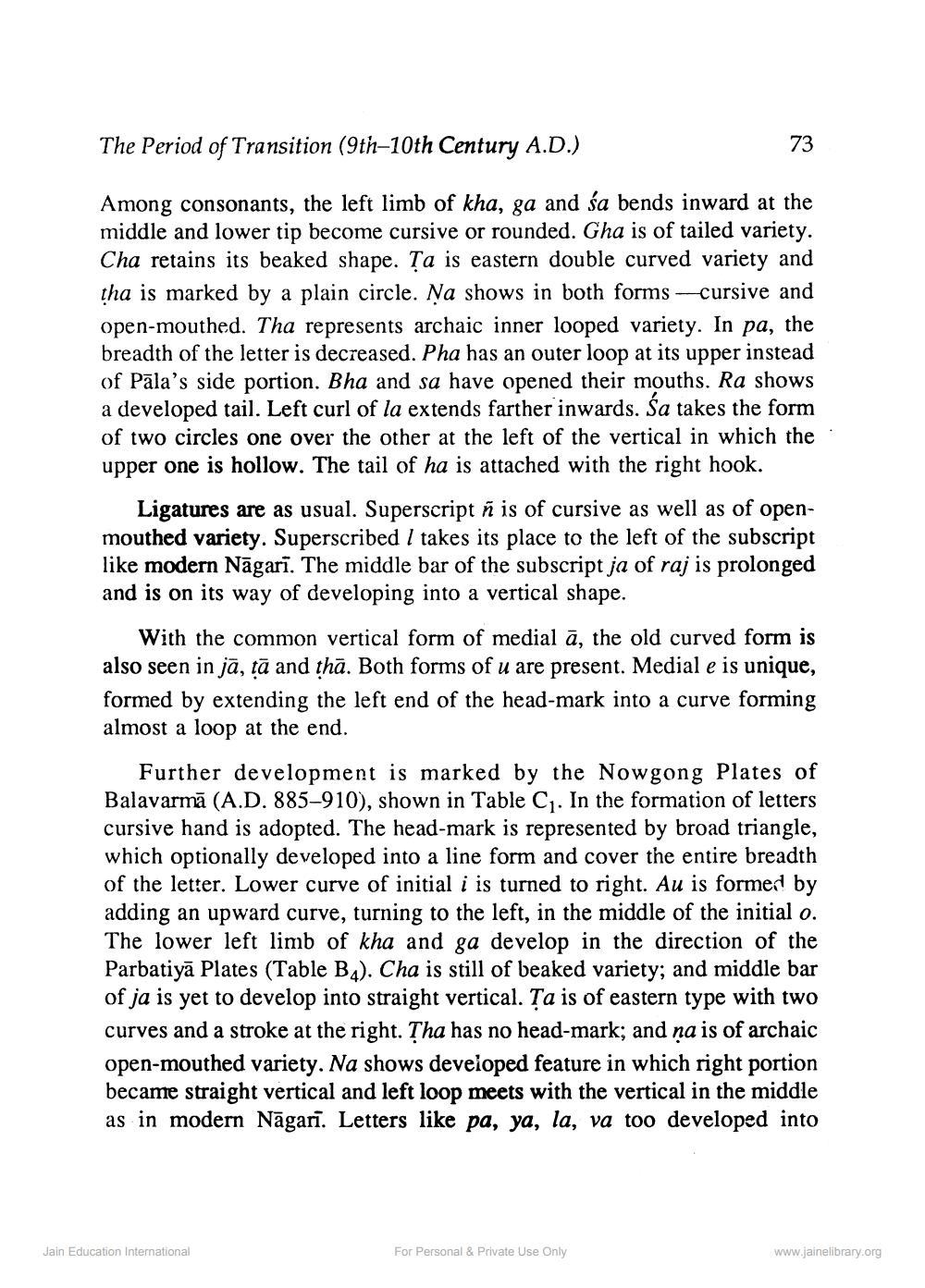________________
The Period of Transition (9th–10th Century A.D.)
73
Among consonants, the left limb of kha, ga and sa bends inward at the middle and lower tip become cursive or rounded. Gha is of tailed variety. Cha retains its beaked shape. Ta is eastern double curved variety and tha is marked by a plain circle. Na shows in both forms -cursive and open-mouthed. Tha represents archaic inner looped variety. In pa, the breadth of the letter is decreased. Pha has an outer loop at its upper instead of Pāla's side portion. Bha and sa have opened their mouths. Ra shows a developed tail. Left curl of la extends farther inwards. Sa takes the form of two circles one over the other at the left of the vertical in which the upper one is hollow. The tail of ha is attached with the right hook.
Ligatures are as usual. Superscript ñ is of cursive as well as of openmouthed variety. Superscribed I takes its place to the left of the subscript like modern Nāgarī. The middle bar of the subscript ja of raj is prolonged and is on its way of developing into a vertical shape.
With the common vertical form of medial ā, the old curved form is also seen in jā, tā and thā. Both forms of u are present. Medial e is unique, formed by extending the left end of the head-mark into a curve forming almost a loop at the end.
Further development is marked by the Nowgong Plates of Balavarmā (A.D. 885–910), shown in Table C. In the formation of letters cursive hand is adopted. The head-mark is represented by broad triangle, which optionally developed into a line form and cover the entire breadth of the letter. Lower curve of initial i is turned to right. Au is formed by adding an upward curve, turning to the left, in the middle of the initial o. The lower left limb of kha and ga develop in the direction of the Parbatiyā Plates (Table B4). Cha is still of beaked variety; and middle bar of ja is yet to develop into straight vertical. Ța is of eastern type with two curves and a stroke at the right. Tha has no head-mark; and ņa is of archaic open-mouthed variety. Na shows developed feature in which right portion became straight vertical and left loop meets with the vertical in the middle as in modern Nāgari. Letters like pa, ya, la, va too developed into
Jain Education International
For Personal & Private Use Only
www.jainelibrary.org




